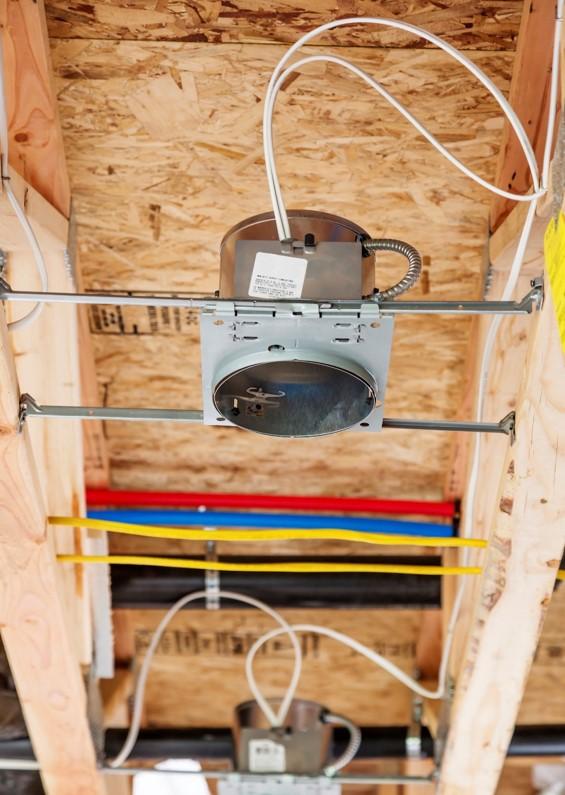
Building Basics
Electrial Wiring and Air Sealing
Installing electrical boxes, light cans and pulling cables is an important task, but a critical detail is to make sure that as these are installed, they are also properly air sealed.
Any penetration into the walls can allow air to flow in and out of the conditioned space. This uncontrolled flow of air can reduce the energy efficiency of the home by allowing cold air to enter in the winter, or warm/moist air flow into the space in the summer. Also, this air flow can bring in toxins and pollutants into the living space.
If air sealed boxes are unavailable, all penetrations must be sealed. Air seal around all electrical wiring and electrical boxes installed through walls, ceilings, and flooring. Sealants (e.g., caulk, fire-retardant caulk, fire-rated spray foam, etc.) should be compatible with all adjoining surfaces and meet the fire and air barrier specifications according to code.
- Using a drill, cleanly cut holes for electrical wiring no more than 1 inch larger in diameter than the wiring diameter.
- Seal around installed wiring using caulk or canned spray foam.
- For ceiling-mounted electrical boxes, install the electrical box in the ceiling drywall, then caulk around the base and caulk all holes in the box with fire-retardant caulk.
- For wall-mounted electrical boxes, install gasketed, airtight electrical boxes or install standard electrical boxes, then caulk all openings and seal the box to the drywall with caulk.